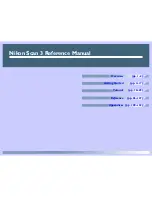
specify too many objects in a backup specification, since they might reside on
too many source volumes. For example, a Microsoft Exchange Server storage
group should typically not reside on more than four source volumes, and only
one storage group should be selected for backup if the storage group occupies
four source volumes. The same limitation also applies to Microsoft SQL Server
databases. If your backup session still fails, reduce the number of volumes further,
for example to two.
Disk Array XP hardware provider limitations
•
If the Disk Array XP VSS hardware provider is in the VSS compliant mode, and
there is a high read-write load the disk array, the replica creation may take a
long time. Consequently, the backup session may fail.
By default, Data Protector waits for a maximum of 45 minutes (2700 seconds)
for mirrors to become synchronized. If synchronization is not completed when
the waiting period expires, Data Protector aborts the backup session.
You can increase the waiting period duration by setting the
OB2VSS_WAIT_TIMEOUT omnirc
variable. The variable value determines the
period (in seconds) for which the Data Protector agent waits for mirrors that are
created in one session to become fully synchronized. If the
OB2VSS_WAIT_TIMEOUT
variable is set to more than 2 hours (7200 seconds),
you should additionally increase the value of the global variable
SmIdleTimeout
past the value of
OB2VSS_WAIT_TIMEOUT
. The value of
SmIdleTimeout
should be specified in minutes, rather than seconds.
If backup sessions are lengthy and there is a possibility that the VSS backup
window will not be met, it is highly recommended that you first switch the Disk
Array XP VSS hardware provider to resync mode. Afterwards, consecutively run
backup sessions until the backup session count reaches the current value of the
Number of replicas rotated
option. This will start creating disk mirrors on Disk
Array XP that will be used in scheduled backups.
ZDB limitations
•
Dynamic disks (Logical Disk Manager partitions) can only be backed up with
software providers.
•
GPT disks are not supported for backup and instant recovery purposes.
Instant recovery limitations
•
Only writers that have data on volumes managed by VDS hardware providers
can be restored using the instant recovery functionality.
Integrating the Data Protector ZDB integrations and Microsoft Volume Shadow Copy Service
346
Содержание Data Protector A.06.11
Страница 18: ...Publication history 18 ...
Страница 83: ...Figure 21 EVA backup options Click Next Zero downtime backup integration guide 83 ...
Страница 85: ...Figure 22 Specifying an Oracle Server system Windows Zero downtime backup integration guide 85 ...
Страница 197: ...Figure 49 XP backup options Zero downtime backup integration guide 197 ...
Страница 198: ...Figure 50 VA backup options Data Protector SAP R 3 ZDB integration 198 ...
Страница 199: ...Figure 51 EVA backup options Click Next Zero downtime backup integration guide 199 ...
Страница 242: ...Data Protector SAP R 3 ZDB integration 242 ...
Страница 256: ...Figure 68 Selecting a snapshot backup Click OK Data Protector Microsoft SQL Server ZDB integration 256 ...
Страница 315: ...1 In the Context List select Restore Zero downtime backup integration guide 315 ...
Страница 328: ...Data Protector Microsoft Exchange Server ZDB integration 328 ...
Страница 363: ...3 Right click MS Volume Shadow Copy Writers and click Add Backup Zero downtime backup integration guide 363 ...
Страница 428: ...Figure 122 Oracle proxy copy ZDB and restore concepts when the ZDB_ORA_INCLUDE_CF_OLF variable is set to 1 Appendix 428 ...
Страница 432: ...Appendix 432 ...
Страница 490: ...Glossary 490 ...
















































